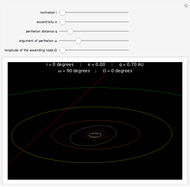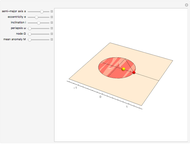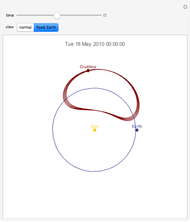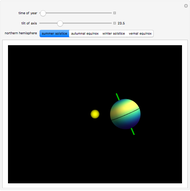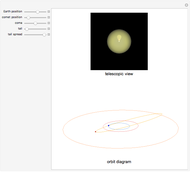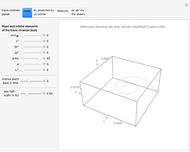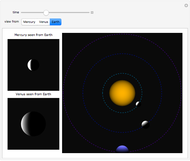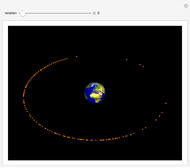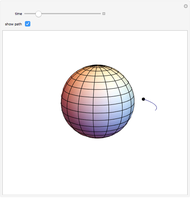Sputnik 1 Orbiting the Earth

Requires a Wolfram Notebook System
Interact on desktop, mobile and cloud with the free Wolfram Player or other Wolfram Language products.
October 2007 marks the  anniversary of the launch of the Russian satellite Sputnik 1, the first human-made object to orbit the Earth. The satellite was carried into orbit on a Soviet R-7 rocket and had a height of 228 km at perigee (closest point to Earth) and a height of 945 km at apogee (farthest point from Earth). Its velocity at perigee was 8 km/s and its time for completing one orbit was 96 minutes. Sputnik 1 stayed in orbit for three months before falling to Earth in January 1958.
anniversary of the launch of the Russian satellite Sputnik 1, the first human-made object to orbit the Earth. The satellite was carried into orbit on a Soviet R-7 rocket and had a height of 228 km at perigee (closest point to Earth) and a height of 945 km at apogee (farthest point from Earth). Its velocity at perigee was 8 km/s and its time for completing one orbit was 96 minutes. Sputnik 1 stayed in orbit for three months before falling to Earth in January 1958.
Contributed by: Steve VanWyk (March 2011)
Open content licensed under CC BY-NC-SA
Snapshots
Details
Data for Sputnik 1, such as its orbital velocity and apogee and perigee distances, varies slightly, depending on the source. These variations are likely due to difficulties in obtaining a good fix on the small satellite while it was orbiting. Data for this demonstration is from the following sources:
[1] V. Barger and M. Olsson, Classical Mechanics: A Modern Perspective, 2nd ed., New York: McGraw-Hill, 1995.
[2] "Sputnik 1," Wikipedia, The Free Encyclopedia, (Oct 31, 2007) en.wikipedia.org/wiki/Sputnik_1.
Permanent Citation
"Sputnik 1 Orbiting the Earth"
http://demonstrations.wolfram.com/Sputnik1OrbitingTheEarth/
Wolfram Demonstrations Project
Published: March 7 2011






